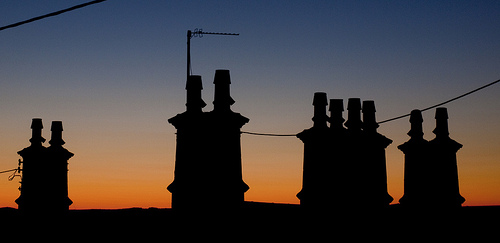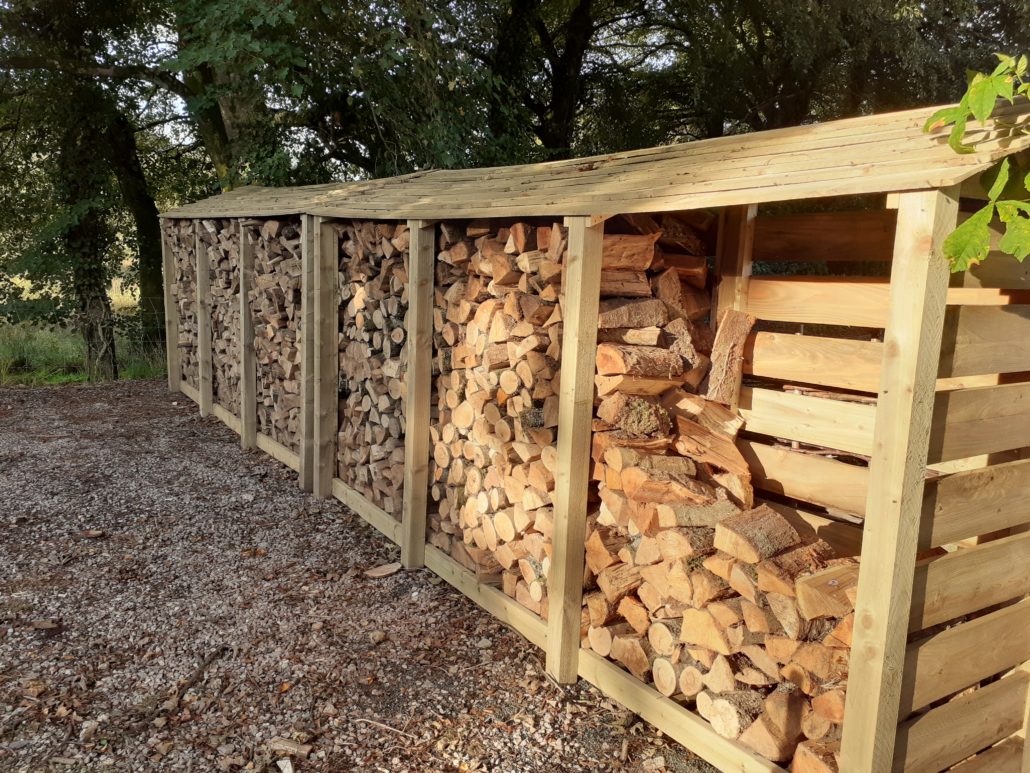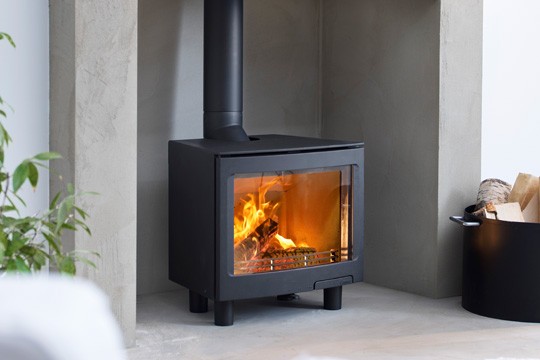
Many households in Rural Devon will be using wood burners as their main source of heating, while other more Urban households use wood burners and open fires as supplementary heating sources. For most people, the sight and smell of wood smoke drifting up and out of a chimney brings back fond memories. Wood is a renewable resource, unlike fossil fuels such as oil, coal and gas, which are non-renewable. In fact, if firewood is harvested in a sustainable way, woods can provide an abundant source of fuel for years to come, and if locally sourced can have a greater green impact due to limited pollution from transportation. Unfortunately, smoke and soot from some wood-burning stoves and open fires can be a significant source of air pollution, negatively impacting public health and the environment.
You can reduce the amount of smoke and pollution from wood burners by
- Operating them properly with the door shut.
- Using only dry firewood. There is no need to buy Kiln dried but do make sure any wood is properly seasoned to at least 20% moisture ideally 15%.
- Never Slumber burn, this is the most inefficient way to run your stove.
- Replacing old less efficient ones with modern ECO DESIGN stoves that designed to reduce emissions by burning wood more efficiently and completely.
These simple steps will help improve combustion efficiency, reduce emissions, help protect public health and the environment, and save fuel costs.
The Problem: Smoke from Wood Burners is a Public Health Risk. The smoke produced from wood burners and open fires contains over 100 different chemical compounds, many of which are harmful and potentially carcinogenic. Wood smoke pollutants include fine particulates, nitrogen oxides, sulphur oxides, carbon monoxide, volatile organic compounds and dioxins. Fine particulate matter, or PM2.5 are very small particles that make up smoke and soot, may be the most dangerous component of wood smoke pollution. Breathing air containing PM2.5 can cause a number of serious respiratory and cardiovascular health problems. Those at greatest health risk from wood smoke include infants, children, pregnant women, the elderly, and those suffering from allergies, asthma, bronchitis, emphysema, pneumonia, or any other heart or lung disease
Pollution from wood burners is a particular concern in the winter when cold, stagnant air and temperature inversions limit air movement. Communities located in valleys are more strongly affected. As wood burning increases on cold, clear, calm nights, smoke is unable to rise and disperse. Pollutants are trapped and concentrated near the ground, and the small size of the particles allows them to seep into houses through closed doors and windows.
The Solution:
Increasing Wood burner efficiency and so reduce the amount of smoke produced, since generally this smoke is mainly because of incomplete combustion. Improving a wood stove’s burning efficiency will improve the combustion process, and thus reduce the amount of smoke and harmful air pollutants released into the air. Burning efficiency is affected by both the design of the stove, the quality of the fuel (is it dry), and how it is operated and maintained.
Here are some ways to improve the stove’s burning efficiency, resulting in less smoke and more money savings on wood fuel costs.
Cheap isn’t always a bargain. Select a quality clean-burning stove and make sure it is of the right size for the space you are heating. Visit a show room rather than buy on line, when buying a new stove, make sure you are purchasing an ECO DESIGN, clean burning, efficient model that promote complete combustion. Properly used, a new stove will pay for itself over time by saving fuel and have a lifetime of 30-40 years.
Professionally Installed. Also ensure your wood burner is properly installed, by a HETAS qualified fitter, don’t be tempted to try and do it yourself. Improper installation could result in more air pollution, chimney fires, or house fires.
Do not burn wet wood. The best wood to use is kiln-dried hardwood with a moisture content of 15 % or below, however air seasoned logs are perfect as long as they have been stored for at least 12 months prior to burning to achieve 20% moisture or below. Wet or freshly cut (“green”) wood is not energy efficient because energy is wasted to produce steam, rather than heat the home. The water content of a tree or freshly-cut firewood can be as high as 50%, compared with 15-20% in dry, well-seasoned wood.

Choose the correct sized logs. Burning dry wood produces a more even burn and helps prevent the formation of creosote, which is a highly-flammable crusty deposit that sticks to the inside walls of your flue or chimney. The use of properly sized split wood piece is equally important. Wood should be split to a maximum thickness of three to four inches. This size increases the surface area exposed to flame, resulting in higher burn efficiency. Only dry, untreated wood is acceptable to burn, not old fencing posts or painted skirting boards.
Know how to use your stove correctly. Efficient wood burning needs proper starting, a good supply of air , and temperatures hot enough to ensure that gases coming off the fire are burned. Start a small fire at first, with dry kindling or small pieces of clean paper and all air vents open. Once the flames from the kindling just begin to subside, add several small pieces of wood, being careful not to smother the fire. The key to maintaining a good fire is careful control of the air and fuel supply. The fire should be small enough for air to get to it, but large enough to be hot and able to burn for hours without opening the wood stove door. A fire that is burning brightly without visible smoke is a sign of good combustion. Excessive smoke from a chimney in the middle of a burn means the smoke is not being burned in the firebox, but is going up the chimney.
Never allow the fire to slumber. Smouldering fires are the worst polluters because they burn at a temperature far too low for full efficient combustion. The result is more smoke –unburned wood going up the chimney, wasted money. This means more air pollution and creosote deposits that could lead to a chimney fire.

ProSweep Professional Chimney Sweep is approved by Devon Trading Standards Buy With Confidence offering a professional and personal chimney sweep & stove flue service in Newton Abbot, Torquay, Dawlish, Teignmouth, Bovey Tracey, Chagford and surrounding towns and villages.Including The Teign Valley .
Book ProSweep on 01626 832051 or 01803 464649